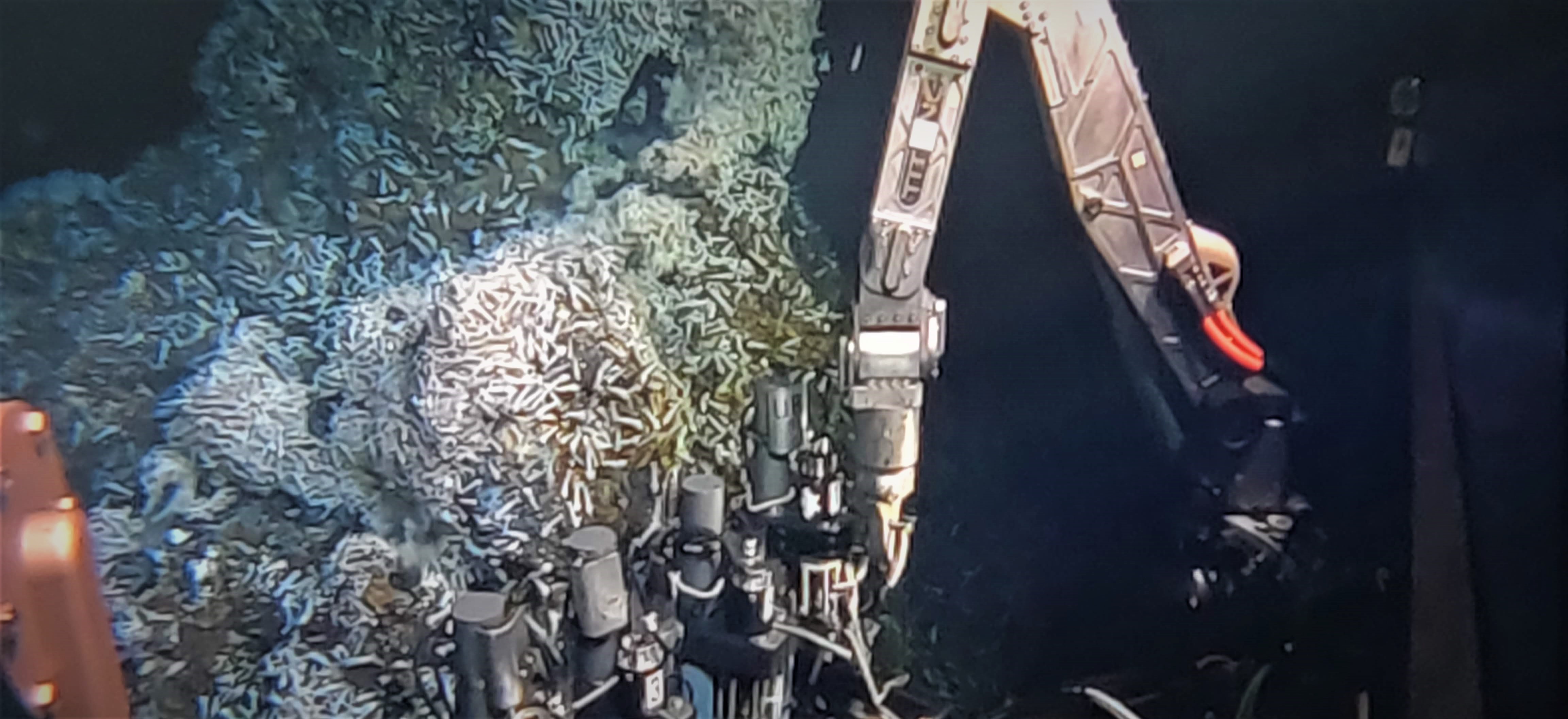Mid-Cayman Rise on:
[Wikipedia]
[Google]
[Amazon]
The Mid-Cayman Rise or Mid-Cayman Spreading Center is a relatively short (110 km long) divergent plate boundary in the middle of the
 The Mid-Cayman Rise is a particularly unique location as there are two confirmed
The Mid-Cayman Rise is a particularly unique location as there are two confirmed
Cayman Trough
The Cayman Trough (also known as the Cayman Trench, Bartlett Deep and Bartlett Trough) is a complex transform fault zone pull-apart basin which contains a small spreading ridge, the Mid-Cayman Rise, on the floor of the western Caribbean Sea bet ...
. It forms part of a dominantly transform boundary that is part of the southern margin to the North American Plate. It is an ultra-slow spreading center where the North American Plate is rifting away from the Caribbean Plate with an opening rate of 15–17 mm per year.
Formation
The Mid-Cayman Rise developed during theEocene
The Eocene ( ) is a geological epoch (geology), epoch that lasted from about 56 to 33.9 million years ago (Ma). It is the second epoch of the Paleogene Period (geology), Period in the modern Cenozoic Era (geology), Era. The name ''Eocene'' comes ...
when the northern part of the Caribbean Plate collided with the Bahamas Platform, forcing the southern boundary to propagate southwards. This boundary initially formed as two strike-slip faults with a large left-stepping offset between them, generating a pull-apart basin
In geology, a basin is a region where subsidence generates accommodation space for the deposition of sediments. A pull-apart basin is a structural basin where two overlapping (en echelon) strike-slip faults or a fault bend create an area of crust ...
. Continuing movement on the boundary and extension within the pull-apart led to the formation of an area of oceanic crust
Oceanic crust is the uppermost layer of the oceanic portion of the tectonic plates. It is composed of the upper oceanic crust, with pillow lavas and a dike complex, and the lower oceanic crust, composed of troctolite, gabbro and ultramaf ...
containing a north-south trending spreading center that remains active to the present day.
When the spreading center formed, all the displacement on the Swan Islands Transform Fault was transferred by the Mid-Cayman Rise to the Septentrional-Oriente fault zone. During the Late Miocene
The Late Miocene (also known as Upper Miocene) is a sub-epoch of the Miocene epoch (geology), Epoch made up of two faunal stage, stages. The Tortonian and Messinian stages comprise the Late Miocene sub-epoch, which lasted from 11.63 Ma (million ye ...
, the leading edge of the Caribbean Plate began to collide with the Bahamas Platform. This led to the development of a new fault system, formed of the Walton fault zone and the Enriquillo–Plantain Garden fault zone, carrying some of the plate boundary displacement and creating the Gonâve Microplate. Eventually all the displacement on the plate boundary is expected to move onto the southern fault system as the microplate becomes accreted to the North American Plate, at which point the Mid-Cayman Rise will become extinct.
Hydrothermal vents
 The Mid-Cayman Rise is a particularly unique location as there are two confirmed
The Mid-Cayman Rise is a particularly unique location as there are two confirmed hydrothermal
Hydrothermal circulation in its most general sense is the circulation of hot water (Ancient Greek ὕδωρ, ''water'',Liddell, H.G. & Scott, R. (1940). ''A Greek-English Lexicon. revised and augmented throughout by Sir Henry Stuart Jones. with th ...
fields in close proximity of each other. The Von Damm vent field, named after geological oceanographer Karen Von Damm, is located on the ocean core complex Mount Dent, and features unique chimney structures of talc
Talc, or talcum, is a clay mineral composed of hydrated magnesium silicate, with the chemical formula . Talc in powdered form, often combined with corn starch, is used as baby powder. This mineral is used as a thickening agent and lubricant ...
. The Beebe Vent field, after William Beebe
Charles William Beebe ( ; July 29, 1877 – June 4, 1962) was an American natural history, naturalist, ornithologist, marine biologist, entomologist, explorer, and author. He is remembered for the numerous expeditions he conducted for the New Y ...
, is the world's deepest hydrothermal system with extremely hot vent fluids. There is activity in the water column to suggest a third vent field, though it has not yet been identified.
The hydrothermal vents cause there to be high temperatures which extremophile organisms live in. These microorganisms have been named ''Candidatus Vondammii.'' They have been studied to understand how they are able to live in extreme conditions. The NASA Astrobiology Program is interested in studying this area as it is an extreme environment that simulates conditions on other planets where life could be found.
References
{{Reflist Geology of the Caribbean